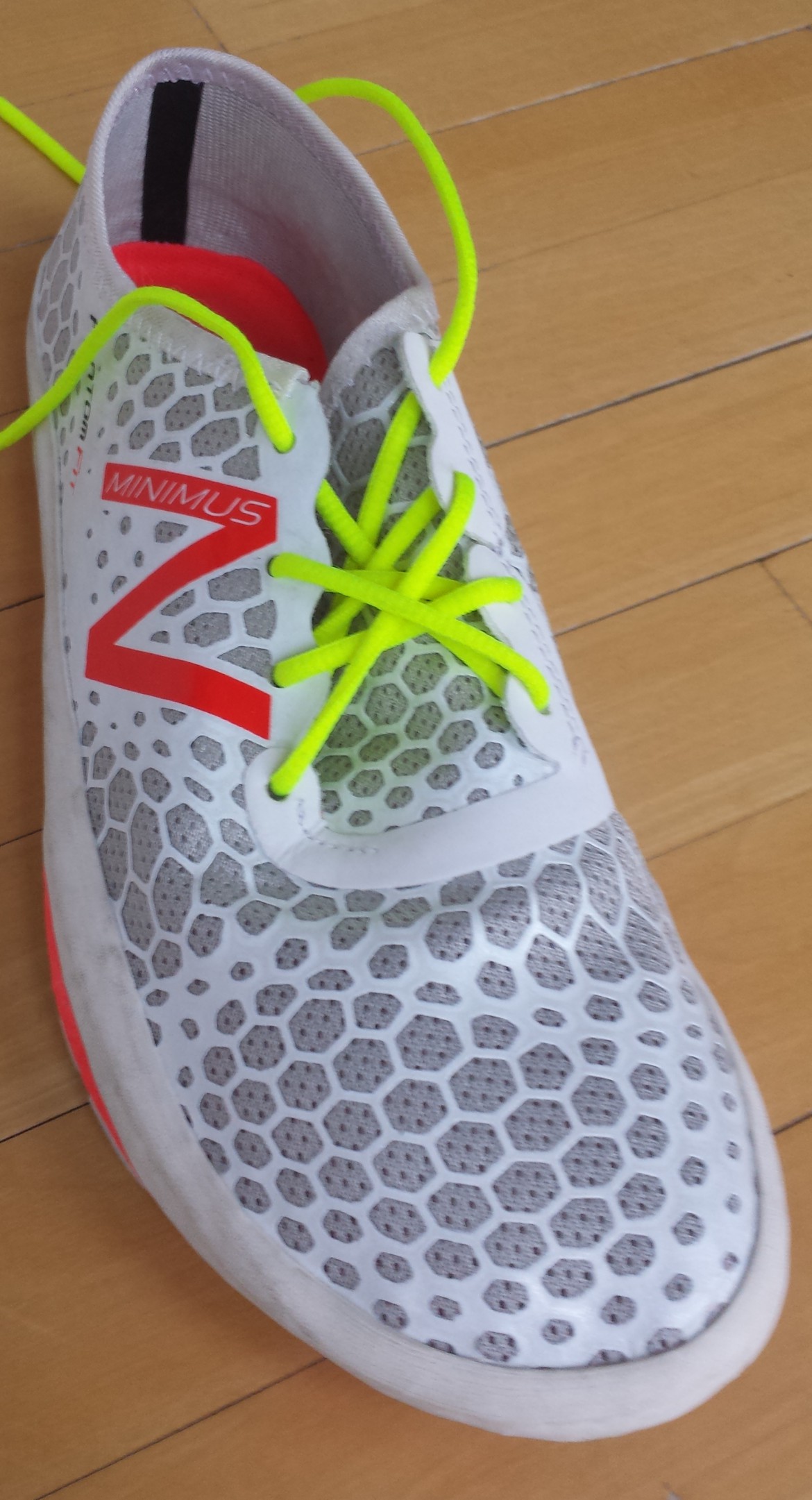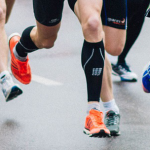Store-Bought Lacing
I’d never given much thought to running shoe lacing techniques. I’d always accepted whatever lacing came with the shoe out of the box. Why, after all, go to the hassle of pulling the laces out and putting them back in if 1) I had no idea of a better way to lace the shoes, and 2) the shoe company put them in – wouldn’t they know what’s best?
So I lived a big chunk of my running life with store-bought lacing.
About 15 years ago, I went to my favourite running store to buy a replacement pair of my favourite shoes. When I opened the box to give them a perfunctory try (I knew they’d fit) I couldn’t get them on. The lacing was a lattice fortress I was ill-equipped to assault – obviously tied by a salesperson with a twisted sense of humour. So when I got them home I undid all the laces and retied them with the only style of lacing I knew. Any other way wouldn’t be the same.
Before that I hadn’t given a second thought to lacing techniques for running shoes. But then I thought, someone must lace their shoes like that. But why?
Benefits of a Lacing Technique?
Having a reliable, workable running shoe lacing technique, as it turns out, can help you out a lot. In addition to letting you get in and out of the shoes reasonably quickly, and keeping them tied throughout the run, some minor tweaks (or major overhauls) to the way you’re tying your shoes can make your shoes fit and feel much better.
There are a huge number of techniques to tie your laces ranging from the tried-and-true criss-cross, to a lightning bolt, to a super-nova. 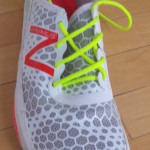
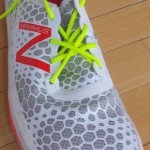
Ninety five percent of the techniques don’t work particularly well for running shoes. Even if fashion is an issue, which it can be, fit usually trumps fashion unless, as my daughter says, beauty is painful. Nor should you need a Ph.D. to figure out how to tighten the laces. Also painful. For most of us runners, we get enough pain thank you.
So, I want to quickly outline the five best, and easiest classic running shoe lacing techniques for the lazy, plus one emerging lacing technique seemingly tailor-made for the torpescent. All on a pair of well-loved running shoes – to prove that you can teach old dogs new tricks.
Tried and True (Easy)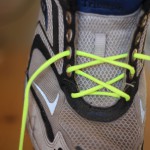
The first is the standard criss-cross. This works for shoes you know fit well and provides the simplicity of undoing the bow, loosening the first set of eyelets and stepping out – reversing the process for getting in. It’s the quick, simple, effective method of tying shoes most of us grew up with. And it starts, in an old pair of running shoes, like this:
Too Tight Across the Top – Try Skipping (Easy)…
If you have a high instep or the shoe is chafing the top of your foot, don’t bring the shoes back yet. There is an easier solution, than going back to the Returns counter. It’s called skipping.
Take out all the laces. Start lacing up as you normally would with a standard criss-cross and, where you’re noticing the rubbing, skip the criss-crossing on those eyelets. Give them a wide berth and continue the criss-cross pattern when you’re beyond the place it hurts.
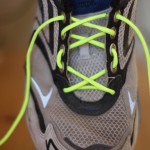
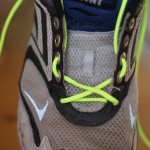
…Or Straight-Bar Lacing (Not so Easy)
Another way to deal with tightness across the top is straight-bar lacing, not as much fun and not half as fast to do. Also known as Lydiard Lacing – for Arthur Lydiard, one of the founders and pre-eminent coaches of the modern running movement – it’s a little tricky to install. But once you’ve got it in, it can be a top-of-the-foot lifesaver. And it looks, well, cool. Maybe beauty isn’t always so painful .
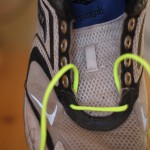
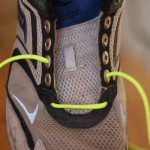
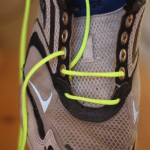
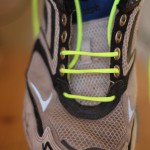
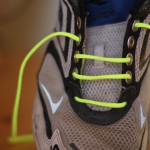
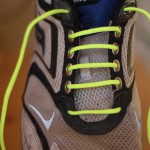
Solution to Heel Chafing – Loop Technique (A Cinch)
If you’re having trouble with your heal chafing, and the rest of the shoe seems to fit perfectly, try using those top (number 7) eyelets, the ones that look like a design afterthought. Use what is known as a loop technique to tighten down just the heel of the shoe and keep it from rubbing. This is a great little, simple technique that can snug down the heel and it also provides a much greater feel of ankle support. Speaking from experience, however, if you’re having achilles issues you’ll probably give this technique a pass and live with the heal chafing.
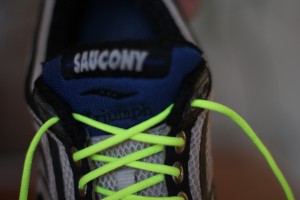
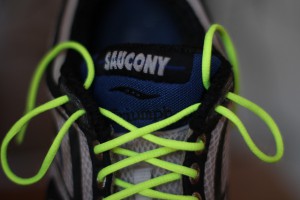
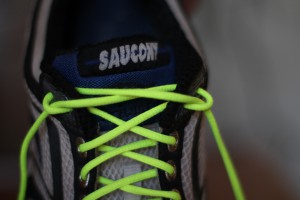
Pre-emptive Strike – Sparing Your a Sore Big Toe (Easy)
Once your big toenail has gone black, well, that’s pretty much that. You’re in for another couple of weeks of tenderness. But you can keep the pressure off that toe, and continue to chalk up the miles, using a tricky little lacing technique designed to do just that.
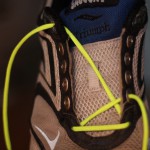
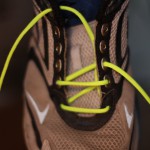
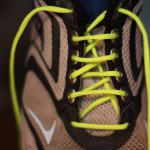
This is a form of the lightning-bolt technique, and it provides a lot of flexibility in controlling the room you have in the toe box (provided there’s some room in there to start with) depending on the tension you use to tie it.
How About Elastic Laces – Ultimate in Easy?
Well, yes, they are the ultimate in easy. If you’re into fast, and you’re tired of having laces come undone, or having to tie laces at all or undo double knots, elastic laces may be the answer. They’re easy to install, and with, for example, Lock Laces, you’ll never have to lace them up again. Your runners become, for all intents and purposes slip-ons. And there’s where things may go a bit sideways.
If you need to solve issues with your favourite shoes that you’d normally slay with different lacing techniques, elastic laces may not be for you. Because the elastics are under constant and relatively uniform tension, they don’t allow you the flexibility to loosen or tighten different parts of lace. Which may not create the feel you’re used to, or the feel you like, in the shoe. And they may allow too much movement of the foot within the shoe to lend itself to longer distance runs.
A company called Xtenex has developed a hybrid lace to solve this problem, allowing you to back off the tension in certain parts of the lace by using knots (yes, knots) between eyelets. It’s a novel design and it’s gaining a following.
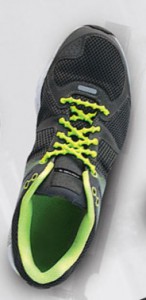
The Do-Nothing Approach
My Saturday running partner, Simon, has a ritual. When we get about 500 m into into the run, one of his laces comes untied. We’ve been running together for 20 of the last 27 years and he has never been able to “shake” this wardrobe malfunction. It happens every time.
I’m suspicious he’s using a store-bought lacing.
And that we’re both being held hostage by a seemingly innocuous decision someone else made for him years ago in a running store not far from here. And that same someone is quietly smirking to him- or her-self every weekend morning, knowing that somewhere out on the roads Simon is now interrupting his run to re-tie his shoes.
I’m thinking of suggesting straight-bar lacing to Simon. Maybe a pair of Xtenex. Or at least double bowing. One way or the other putting an end to this lacing technique madness.
But I always think better of it. Because that’s the problem with ritual. And with changing to make anything better.
It just wouldn’t be the same.
